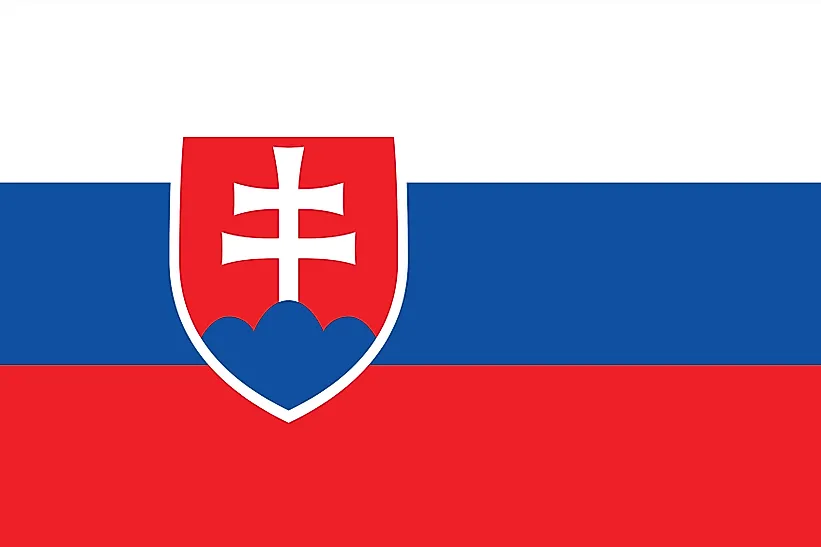
슬로바키아
| 대륙 | 유럽 |
| 자본 | 브라티슬라바 |
| 인구 | 5,445,802 |
| GDP | $169.00억 |
| 1인당 GDP | $31,200 |
| 다이얼링 코드 | +421 |
| ISO 코드(2글자) | SK |
| ISO 코드(3글자) | SVK |
슬로바키아 소개
풍부한 전통과 자연의 아름다움을 간직한 나라 슬로바키아에 오신 것을 환영합니다. 49,035제곱킬로미터에 약 540만 명의 인구가 살고 있는 슬로바키아는 중앙 유럽 역사의 교차로에 서 있는 놀라운 풍경과 문화유산이 어우러진 곳입니다.
지리적 특징과 자연의 아름다움
슬로바키아의 지형은 하이 타트라스 산맥부터 판노니아 평원까지 다양한 지형을 아우릅니다. 이 나라에는 드라마틱한 산맥, 광대한 동굴 시스템, 거대한 다뉴브강이 있습니다.
고산 봉우리와 빙하 호수가 있는 타트라 국립공원을 포함한 9개의 국립공원이 있습니다. 이 나라의 다양한 지형은 불곰과 스라소니를 비롯한 독특한 야생 동물을 지원하는 다양한 생태계를 조성합니다.
보호 지역에는 슬로바키아 파라다이스 국립공원과 유네스코가 인정한 수많은 동굴이 있습니다. 슬로바키아는 자연 유산을 보존하는 동시에 지속 가능한 관광을 장려하는 데 중점을 두고 자연 보호에 힘쓰고 있습니다.
문화 유산과 전통
슬로바키아 문화는 슬라브 전통과 중앙 유럽의 영향이 독특하게 조화를 이루고 있습니다. 이 나라의 유산에는 독특한 목조 교회, 스피스 성 같은 중세 성, 전통 민속 예술이 포함되어 있습니다.
전통 예술로는 와이어 공예, 레이스 만들기, 후자라(양치기 피리)를 이용한 민속 음악이 있습니다. 전통 축제, 민속 춤, 독특한 부활절 전통 등 다양한 문화적 관습이 있습니다.
슬로바키아 요리는 목가적인 유산을 반영하여 브린조베 할루스키(양 치즈 만두)와 카푸스트니카(사우어크라우트 수프)와 같은 요리를 선보입니다. 와인 양조와 양치기 문화의 전통은 지역 정체성의 핵심으로 남아 있습니다.
역사 여행
슬로바키아의 역사는 대모라비아 제국부터 헝가리 통치, 현대 독립에 이르기까지 다양합니다. 슬로바키아의 중앙에 위치한 위치는 역사 전반에 걸쳐 국가 발전에 영향을 미쳤습니다.
중요한 시기에는 중세 헝가리 왕국, 합스부르크 왕가의 통치, 체코슬로바키아 시대, 1993년 독립이 있습니다. 헝가리와 체코의 평화로운 분리는 "벨벳 이혼"으로 알려지게 되었습니다.
현대 경제 환경
오늘날 슬로바키아 경제는 제조업, 특히 자동차 생산과 서비스업에 중점을 두고 있습니다. 슬로바키아는 세계 최대의 1인당 자동차 생산국 중 하나로 부상했습니다.
최근 이니셔티브는 기술 혁신, 재생 에너지, 관광 개발에 중점을 두고 있습니다. 슬로바키아의 숙련된 인력과 전략적 위치는 경제 성장을 뒷받침합니다.
국제 관계 및 글로벌 포지셔닝
슬로바키아는 유럽 연합과 나토에 적극적으로 참여하면서 지역 협력을 촉진하고 있습니다. 슬로바키아의 중심적인 위치와 산업적 강점은 중부 유럽에서 영향력을 확대하고 있습니다.
알고 계셨나요?
- 슬로바키아는 세계에서 1인당 성이 가장 많은 나라입니까?
- 중부 유럽에서 가장 많은 목조 교회가 있는 나라는 어디인가요?
- 브라티슬라바와 비엔나는 유럽에서 가장 가까운 두 수도인가요?
- 메질라보르체에 있는 앤디 워홀 현대 미술관은 예술가의 슬로바키아 유산을 기념하는 곳인가요?
결론
슬로바키아는 자연의 아름다움과 산업 기술의 독특한 조합을 자랑합니다. 산봉우리부터 유서 깊은 도시, 민속 전통부터 현대식 공장까지 슬로바키아는 문화유산을 보존하면서 발전을 거듭하고 있습니다. 지역 개발과 환경 보호 등의 과제를 해결하면서 슬로바키아는 중부 유럽의 핵심 국가로서의 입지를 유지하면서 발전을 위해 노력하고 있습니다.





